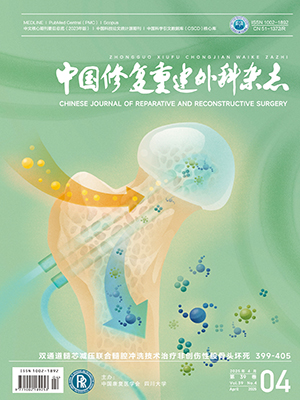| 1. |
Shu M, Ke J. The surgical management of osteoid osteoma: A systematic review. Front Oncol, 2022, 12: 935640.
|
| 2. |
Tepelenis K, Skandalakis GP, Papathanakos G, et al. Osteoid osteoma: An updated review of epidemiology, pathogenesis, clinical presentation, radiological features, and treatment option. In Vivo, 2021, 35(4): 1929-1938.
|
| 3. |
Adlan A, Azzopardi C, Davies M, et al. Metachronous osteoid osteoma of the mid-diaphysis of the fibula and distal humerus: a case report. Indian J Radiol Imaging, 2022, 32(2): 253-255.
|
| 4. |
AlQahtani SM, Albadran AA, Altalib A, et al. Osteoid osteoma of the proximal humerus: a case report and literature review. Saudi J Med Med Sci, 2023, 11(2): 178-182.
|
| 5. |
Singh DK, Katyan A, Kumar N, et al. CT-guided radiofrequency ablation of osteoid osteoma: established concepts and new ideas. Br J Radiol, 2020, 93(1114): 20200266.
|
| 6. |
Civino A, Diomeda F, Giordano L, et al. Intra- and juxta-articular osteoid osteoma mimicking arthritis: case series and literature review. Children (Basel), 2023, 10(5): 829.
|
| 7. |
Izzo A, Zugaro L, Fascetti E, et al. Management of osteoblastoma and giant osteoid osteoma with percutaneous thermoablation techniques. J Clin Med, 2021, 10(24): 5717.
|
| 8. |
Gryglewski K, Napora J, Wałejko S, et al. Recent advances on diagnosis and treatment of osteoid osteoma. Pol Orthop Traumatol, 2022, 87(1): 25-31.
|
| 9. |
Acanfora C, Grassi E, Giacobbe G, et al. Post-procedural follow-up of the interventional radiology’s management of osteoid osteomas and osteoblastomas. J Clin Med, 2022, 11(7): 1987.
|
| 10. |
Lindquester WS, Crowley J, Hawkins CM. Percutaneous thermal ablation for treatment of osteoid osteoma: a systematic review and analysis. Skeletal Radiol, 2020, 49(9): 1403-1411.
|
| 11. |
Shanmugasundaram S, Nadkarni S, Kumar A, et al. Percutaneous ablative therapies for the management of osteoid osteomas: a systematic review and meta-analysis. Cardiovasc Intervent Radiol, 2021, 44(5): 739-749.
|
| 12. |
Wang TL, Luo YP, Zhou ZF, et al. O-arm-navigated, robot-assisted versus conventional CT guided radiofrequency ablation in treatment of osteoid osteoma: a retrospective cohort study. Front Surg, 2022, 9: 881852.
|
| 13. |
Rivero-Moreno Y, Echevarria S, Vidal-Valderrama C, et al. Robotic surgery: A comprehensive review of the literature and current trends. Cureus, 2023, 15(7): e42370.
|
| 14. |
Bramhe S, Pathak SS. Robotic surgery: a narrative review. Cureus, 2022, 14(9): e29179.
|
| 15. |
Guo X, Wang D, Li J, et al. Global research status and trends in orthopaedic surgical robotics: a bibliometric and visualisation analysis study. J Robot Surg, 2023, 17(4): 1743-1756.
|
| 16. |
林书, 谭科, 胡豇, 等. 改良骨科机器人辅助椎体后凸成形术治疗骨质疏松性椎体压缩骨折疗效分析. 中国修复重建外科杂志, 2022, 36(9): 1119-1125.
|
| 17. |
朱振中, 郑国焱, 张长青. 机器人辅助技术在创伤骨科的发展与临床应用. 中国修复重建外科杂志, 2022, 36(8): 915-922.
|
| 18. |
Laurence N, Epelman M, Markowitz RI, et al. Osteoid osteomas: a pain in the night diagnosis. Pediatr Radiol, 2012, 42(12): 1490-1501.
|
| 19. |
Maselli F, Storari L, Lorusso M, et al. Osteoid osteoma in an adult wheelchair basketball player mimicking musculoskeletal shoulder pain: red flag or a red herring? Tomography, 2022, 8(1): 389-401.
|
| 20. |
Noordin S, Allana S, Hilal K, et al. Osteoid osteoma: Contemporary management. Orthop Rev (Pavia), 2018, 10(3): 7496.
|
| 21. |
Parmeggiani A, Martella C, Ceccarelli L, et al. Osteoid osteoma: which is the best mininvasive treatment option? Eur J Orthop Surg Traumatol, 2021, 31(8): 1611-1624.
|
| 22. |
巩春甫, 旷甫国, 苟亚伟, 等. CT引导下经皮微波消融治疗四肢骨样骨瘤的临床研究. 中国骨与关节杂志, 2023, 12(5): 357-360.
|
| 23. |
Alemdar C, Çaçan MA, Dusak A, et al. A comparison of percutaneous trephine excision and open surgery in the treatment of osteoid osteoma. Int Orthop, 2016, 40(7): 1481-1487.
|




